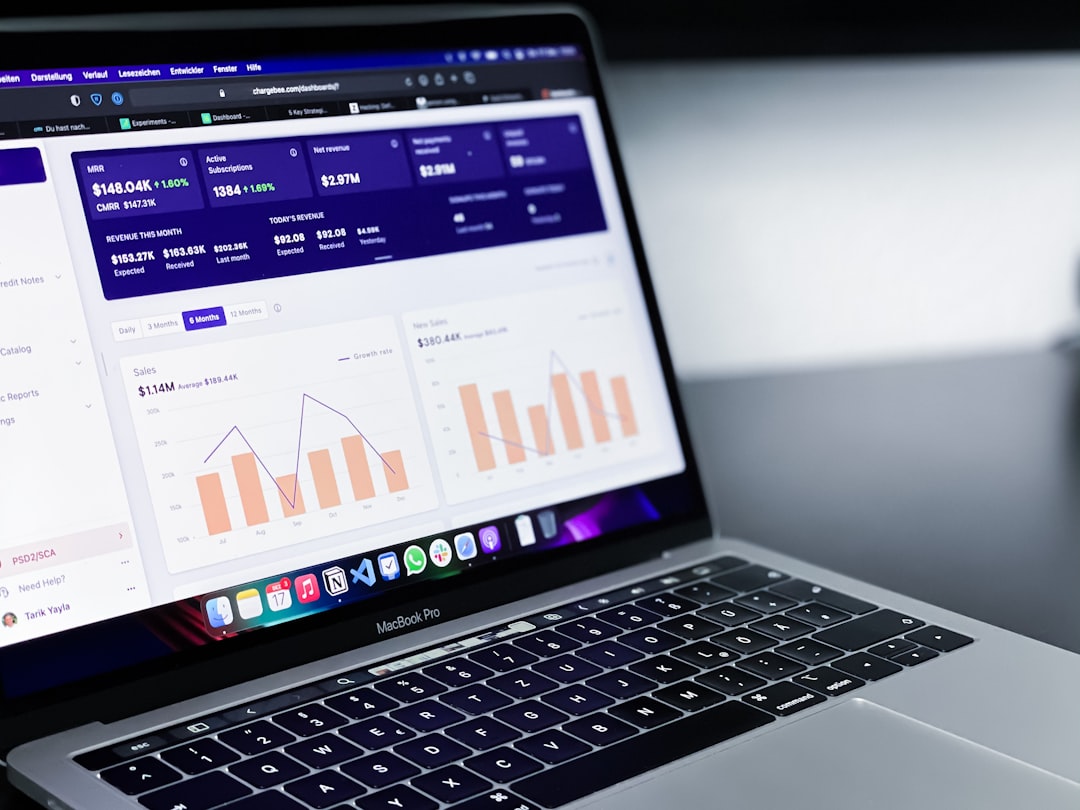Growth hacking is a buzzword in the marketing world that refers to the strategies and techniques used to rapidly grow a business. This term was coined by entrepreneur and marketer Sean Ellis, who pioneered this approach while working with startups in Silicon Valley. Growth hacking is all about finding innovative and unconventional ways to achieve business growth quickly and efficiently.
There are many reasons why growth hacking has become so important in today’s digital landscape. With so much competition in every industry, businesses need to constantly strive for growth and find new ways to reach and engage their target audience. Traditional marketing tactics like advertising or public relations are expensive and often have limited reach, making growth hacking an attractive alternative for businesses of all sizes.
Another key advantage of growth hacking is its ability to be incredibly targeted and data-driven. By analyzing user behavior, market trends, and other key metrics, growth hackers can identify the strategies and tactics that are most effective at driving conversions and fueling business growth.
In this blog post, we will explore some of the most effective growth hacking strategies, including A/B testing, viral marketing, influencer marketing, customer retention, and search engine optimization. By the end of this post, you will have a solid understanding of how to implement these techniques to drive sustainable growth for your business.
The Power of A/B Testing: Testing Your Way to Growth
A/B testing or split testing is a method of comparing two versions of a webpage or app against each other to determine which one performs better. This testing helps organizations to understand the preferences of the users and to make data-driven decisions on how to optimize their web pages or apps.
A/B testing works by dividing the user traffic into two groups, with each group being shown a different version of the webpage or app. The results are then analyzed to determine which version performs better. This method has been proven to be effective in increasing conversions and can be used to test various elements such as headlines, call to actions, images, and colors.
One of the biggest advantages of A/B testing is that it helps to reduce guesswork and assumptions when it comes to making decisions about your website or app. It provides concrete data on which elements or variations work better, allowing you to optimize your design and user experience accordingly.
There are many A/B testing tools available in the market, such as Google Optimize, Optimizely, and VWO (Visual Website Optimizer). These tools make it easy for even non-technical users to set up and run A/B tests on their webpages or apps.
In conclusion, A/B testing is a powerful tool that can help organizations to optimize their website or app and improve their overall conversion rates. It is especially useful for startups and small businesses that want to test their marketing campaigns and website designs to ensure they are resonating with their target audience. By leveraging A/B testing, businesses can achieve sustainable growth and success in their marketplace.
This method has been proven to be effective in increasing conversions and can be used to test various elements such as headlines, call to actions, images, and colors.
Viral Marketing: Leveraging the Power of Word-of-Mouth
Viral marketing is a technique that relies on word-of-mouth or social media to promote a product or service. When done correctly, it can spread like wildfire and drive significant traffic to your website or social media pages. The key to viral marketing is to create content that is shareable and relatable to your target audience.
The first step in creating a viral marketing campaign is to identify your target audience. Who do you want to reach with your content? What are their interests, habits, and behaviors? Once you have a clear understanding of your target audience, you can start brainstorming ideas for content that will resonate with them.
The next step is to create your content. This can be anything from a video, infographic, or blog post, to a social media post or meme. The key is to make it shareable and easy to understand. You want people to see your content and immediately feel compelled to share it with their friends and followers.
Once you have created your content, it’s time to promote it. Share it on your social media platforms and encourage your followers to share it with their friends. Reach out to influencers in your industry and ask them to share it with their followers. The more exposure your content gets, the more likely it is to go viral.
Finally, it’s important to track the success of your viral marketing campaign. Monitor the number of shares, likes, and comments on your content. Use this data to adjust your strategy and create even more effective campaigns in the future.
Overall, viral marketing can be a powerful tool for driving traffic and increasing your brand’s visibility. With the right approach and a little bit of creativity, you can leverage the power of word-of-mouth to take your business to the next level.
The next step is to create your content.
Influencer Marketing: Leveraging the Power of Social Proof
In today’s digital age, influencer marketing is quickly becoming one of the most effective ways businesses can increase their reach and drive sales. Influencers are individuals who have an established and engaged following on social media or other online platforms.
The power of influencer marketing lies in the concept of social proof. People tend to trust the opinions and recommendations of those they perceive as credible and knowledgeable. When influencers endorse a product or service, their followers are much more likely to buy it because they trust the influencer’s judgment. This is why working with the right influencers can be so powerful for businesses, especially those looking to increase their visibility and credibility in a crowded marketplace.
Influencer marketing campaigns can take a variety of forms, from sponsored posts to product reviews to social media takeovers. Some businesses may choose to work with a single influencer, while others may partner with several influencers to target different demographics or segments of their audience. Whatever the approach, the goal is always to leverage the social proof and credibility of the influencer to drive traffic, sales, and brand recognition.
One key advantage of influencer marketing is its ability to help businesses reach new audiences that may have been difficult to tap into otherwise. Influencers have their own follower base and can expose businesses to a new set of potential customers. Moreover, since influencers tend to have highly engaged and loyal followers, the content they create and share can often result in high engagement rates and valuable user-generated content that businesses can leverage for their own marketing efforts.
Another advantage of influencer marketing is its potential long-term benefits for businesses. Unlike traditional advertising, in which businesses pay for exposure that diminishes as soon as the ad stops running, influencer marketing creates a lasting impact by building up a long-term relationship between the influencer and the business. This can result in continued exposure, increased loyalty, and sustained growth over time.
In conclusion, influencer marketing is an incredibly powerful tool for businesses that want to tap into the power of social proof to increase their reach, drive sales, and build their brand. By working with the right influencers and crafting effective campaigns, businesses can access new audiences, generate valuable content, and create lasting relationships that lead to sustainable growth.
When influencers endorse a product or service, their followers are much more likely to buy it because they trust the influencer’s judgment.
Customer Retention: Keeping Your Customers Happy and Coming Back
Customer retention is the practice of ensuring that your existing customers continue to do business with your company for a long period. When it comes to growth hacking, many people focus on customer acquisition and forget that retaining existing customers is just as important.
There are many reasons why customer retention is crucial, but the most obvious one is that it’s more cost-effective to keep an existing customer than it is to acquire a new one. According to a study by Econsultancy, it costs five times more to attract a new customer than it takes to retain an existing one. Additionally, a loyal customer is more likely to refer your business to friends, family, and colleagues, which can lead to more customers and sustainable growth.
To keep your customers happy and coming back, you need to invest in providing excellent customer service. Customers are more likely to stay loyal to a business that values them and treats them with respect. You can achieve this by creating a customer-centric culture at your company, which involves making sure that every employee understands the importance of great customer service.
Another way to retain customers is by providing them with incentives to keep coming back. For instance, you can provide loyal customers with discounts, special offers, or access to exclusive content. This is a great way to show your customers that you appreciate their business and value their loyalty.
Personalization is also crucial when it comes to customer retention. Customers like to feel unique and appreciated, and personalization is an excellent way to achieve this. By personalizing your customer’s experience, you can make them feel special and valued, which can lead to higher customer satisfaction and retention.
In conclusion, customer retention is a crucial component of any growth hacking strategy. It’s more cost-effective to retain an existing customer than it is to acquire a new one, and loyal customers are more likely to refer your business to others, leading to sustainable growth. By investing in excellent customer service, providing incentives to keep customers coming back, and personalizing their experience, you can keep your customers happy and coming back for more.
To keep your customers happy and coming back, you need to invest in providing excellent customer service.
Search Engine Optimization: Ranking Higher in Search Results
Search engine optimization (SEO) is an essential component of any growth hacking strategy. By optimizing your website for search engines, you can attract more organic traffic and generate more leads and conversions. SEO involves a variety of tactics, from keyword research and on-page optimization to link building and technical website improvements.
One of the most important aspects of SEO is targeting the right keywords. You want to identify the search terms that your target audience is using to find products or services like yours. You can use tools like Google Keyword Planner or SEMrush to conduct keyword research and identify high-value keywords to target.
Once you have identified your target keywords, you can then optimize your website’s content to include those keywords in strategic places. This includes your website’s titles, meta descriptions, headers, and body copy. However, it’s important to avoid “keyword stuffing,” which can do more harm than good for SEO.
Link building is another crucial aspect of SEO. By getting other websites to link to your site, search engines see it as a vote of confidence in your content. There are many tactics for building high-quality links, such as guest blogging, broken link building, and creating shareable content.
Technical improvements to your website can also have a significant impact on your search engine rankings. This includes ensuring your site is mobile-friendly, improving site speed, and optimizing your site’s navigation and site architecture.
By implementing these SEO tactics, you can improve your website’s visibility in search engine results pages and attract more organic traffic. This can help you reach your growth goals and establish a strong online presence.
Overall, SEO should be an essential component of any growth hacking strategy. It’s a long-term investment that can yield significant returns over time by driving more organic traffic to your website and improving your brand’s visibility. So, take the time to optimize your website for search engines and watch your online presence grow.
This includes your website’s titles, meta descriptions, headers, and body copy.
Conclusion: Implementing these Strategies for Sustainable Growth
After going through each of the six growth hacking strategies outlined above, it is clear that there are various ways to grow your business. From A/B testing to customer retention, each approach can be tailored to suit the needs and nature of your business. What’s more important is to find the right combination of these strategies and to implement them in a sustainable manner.
In order to achieve sustainable growth, it is important to constantly experiment and iterate with different tactics. As the marketplace evolves and competition increases, it is important to stay agile and flexible, adapting to changing consumer needs and preferences. This means constantly monitoring your growth metrics, understanding your customer data, and experimenting with new strategies.
In addition, it is equally important to focus on creating a strong brand identity and delivering a great customer experience. Growth hacking strategies can only take you so far, but ultimately it is the quality of your product, the level of customer service, and your company culture that will drive sustainable growth.
Finally, it is important to remember that growth is not just about increasing revenue or user acquisition. Sustainable growth is about creating long-term value for your customers, employees, and stakeholders. By focusing on delivering exceptional value to all stakeholders, you will be able to build a strong foundation for growth and success.
In conclusion, growth hacking is an essential tool for businesses of all sizes and industries. By leveraging the power of A/B testing, viral marketing, influencer marketing, customer retention, search engine optimization, and other growth strategies, businesses can achieve sustainable growth and compete in today’s fast-paced marketplace. However, it is important to remember that growth hacking is not a silver bullet, and success ultimately depends on creating value for all stakeholders.





